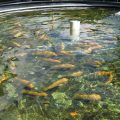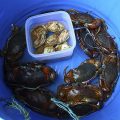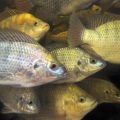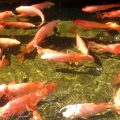Duckweed is a small floating organic plant found worldwide and often seen growing in thick, blanket-like mat on still, nutrient rich fresh and moderately saline environment. They are monocotyledons, belonging to the botanical family Lemnaceae and are classified as higher plants. The family consists of four genera, Lemna, Spirodela, Wolffia, and Wolfiella, among which about 40 species have been identified. Their leaves and stems merged in common structure typically known as frond (leaf bearing spores).
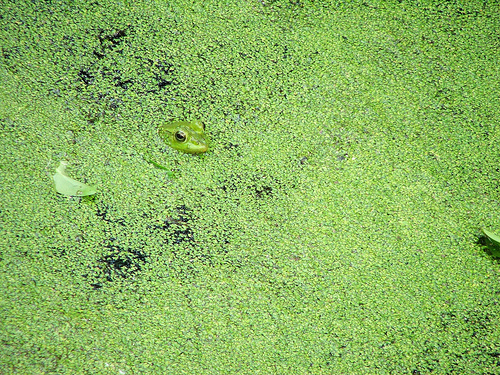
Only L. perpusilla and L. aequinoctialis have these 2 prominent, wing-like, lateral appendages on their basal root sheaths. In addition, their roots are only about 3 cm long, shorter than most other North American species of Lemna.
Its reproduction is primarily vegetative. An individual frond may produces as many as 10
generations of progeny over a period of 10 days to several weeks before dying. It can double their
mass in less than 2 days under ideal conditions of nutrient availability, sunlight and temperature.
Duckweed plants appear to be a complete nutritional package for tilapia ponds. It is significantly more productive and easier to manage than traditional pond fish culture processes. Its species grow faster in warm weather when fish need more feed and more slowly in cold weather when the fish do not require as much feed. BFAR Researchers found out that tilapia fed with a diet consisting of 50% fresh duckweeds and 50% commercial feeds offers the best possible economic return.
Duckweed farming is a continuous process requiring intensive management for optimum production. Duckweed can be farmed using organic and non-organic inputs. Some source of nutrients being supplied from chicken dung, cattle dung, pig waste or any other organic matter in slurry form. To produce duckweeds, seed plants must be transferred to a growing area, which could be tanks, ponds, or any secured body of water.
The potential for duckweed residues in its use as a sole fish feed or a component of fish diets shows significant result where it can be used at the site of production for fish cultivation.
Steps in Duckweed propagation in net enclosure:
1. Pond Draining
2. Removal of weeds and unwanted species
3. Sun drying
4. Water filling (0.5-0.7 meter)
5. Fertilization
- a. Chicken manure: 250 g/wk/net(tea bag method)
- b. Ammonium phosphate (16-20-0/ Urea) 12.5g/wk/net (dilute in water)
6. Installation of net enclosure (1m x 5m x 0.3m)
7. Inoculation – 1.0 kg
8. Incubation period 5 to 7 days
9. Harvesting using fine mesh sieve
10. Production: 0.5 kg fresh weight/ net enclosure/day
Advantages of Duckweed as a convenient feed for fish:
1. It can be readily grown locally often in waste ponds that are polluted.
2. It can be fed fresh and since it floats, it may be totally used by fish.
3. It is used efficiently by fish such as tilapia and carp.
4. It is relatively inexpensive to produce or may be regarded to have no cost.
Other benefits of utilizing Duckweed:
1. Helps in reducing nitrogen and phosphorus from the water (excessive N & P will cause nuisance algae blooms and damage aquatic habitats resulting to fish kill).
2. It provides a practical, environmentally friendly method of nutrient removal and algae control for sewage treatment
3. Its ability to effectively control many types of blue-green algae.
4. Recent studies have confirmed duckweed’s potential as a valuable high-protein, vitamin rich feed supplement.
5. Serves as a pollutant absorber in municipal sewage or agricultural effluents.
6. The high protein content and higher concentrations of trace minerals, pigments(beta carotene & xanthophyll) and essential amino acids of duckweed is found useful for feeding to animals as well for human beings. (FAO standards)
Points to remember
1. Temperature range for good harvest is 20ºC to 28ºC.
2. Better growth in the pH of 6.5 – 7.5
3. After 7 days of stocking a daily harvest of 0.5 kg/net enclosure/day is recommended to maintain a healthy standing crop.
4. Harvesting can be done manually.
5. Fresh harvest duckweed is immediately fed to tilapia.
For more inquiries write or mail to:
MELCHOR M. TAYAMEN
Center Chief IV/ Project Manager
BFAR-NFFTC
CLSU Compound, Science City of Muñoz 3120 Nueva Ecija, Philippines
Telefax. : +63 (044) 456-0670
E-mail : nfftrc@mozcom.com
Source: nfrdi.da.gov.ph

